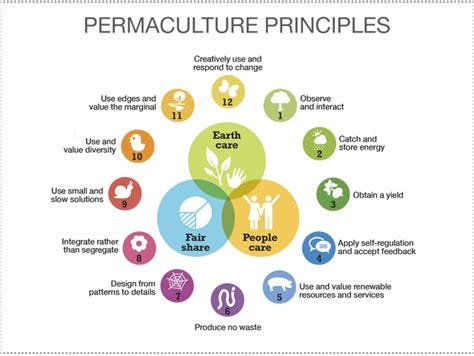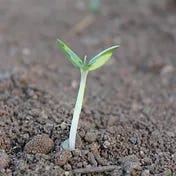An Introduction to Permaculture
Resources based on a presentation about introducing Permaculture given at the London Permaculture Festival 2025 at Cecil Sharpe House, London.
What is Permaculture? Unfortunately, there is no definitive or single answer to give to this question. Permaculture is many things, to many people. Most will probably hear the word Permaculture and relate it to agriculture or growing food in a garden or community space. That’s certainly a big part of what Permaculture is, but it’s not all that it is, or even, perhaps, not even the best way to look at it.
When Bill Mollison and David Holmgren first came up with the term “Permaculture” in the late 1970s they were simply joining the words ‘Permanent’ with ‘Agriculture’ to suggest an alternative approach to large-scale food growing, based on indigenous knowledges. As the decades passed, Permaculture became just as much about smaller-scale gardens, allotments, and community gardens, as it was about farming. It also became more than about growing food. First, Mollison expanded its scope to settlement design, and then it grew into a framework encompassing all aspects of civilisation.
It is for these reasons, that defining Permaculture is much harder to do than by rights it should be.
Defining Permaculture
When I was asked by the organisers of the London Permaculture Festival to run a session introducing Permaculture the need to define the term was the first thing that I tried to do. I knew from long experience in the field that this wasn’t an easy task. Co-founder of Permaculture, Bill Mollison had tended to describe it through a rather philosophical lens, suggesting that it is:
“A philosophy of working with, rather than against nature; of protracted and thoughtful observation rather than protracted and thoughtless labour; and of looking at plants and animals in all their functions, rather than treating any area as a single product system.”
His fellow co-founder, David Holmgren has come to emphasis ‘design’ as the core of Permaculture, arguing that it is:
“a design system for resilient living and land use based on universal ethics and ecological design principles”.
The UK Permaculture Magazine describes Permaculture in a slightly different way, emphasising that this regenerative way of living is open to anyone at anytime, and anywhere:
“Permaculture is an innovative framework for creating regenerative ways of living; a practical method for developing ecologically harmonious, ethical, human-scale and productive systems that can be used by anyone, anywhere.”
I could continue with a whole range of quotations from different Permaculturists attempting to define it in slightly different ways, but that could take a while. For me, I have come to define Permaculture as an ecological and ethical design framework for sustainable living.
It took me a while to get there, and although I first started to look into Permaculture over a decade ago, it was only really when I completed a Permaculture Design Certificate (PDC) that I grasped three key elements of what Permaculture really is:
It is a design framework for sustainable living
When talking about growing food, Permaculture shifts the focus more towards Perennials than Annuals (so more focus on growing Rhubarb, Spinach, fruits such as apples, gooseberries, etc., and herbs, but less on annuals such as tomatoes, peppers, and corn). This is upside down from where most food gardeners begin.
It offers a training programme based on introductory sessions, more detailed and lengthy Design Certificates, and occasionally diplomas thus building a wider network of connected individuals and groups.
In addition, Permaculture nurtures community and connectivity between people. In this it differs from the idea of self-sufficiency by arguing that shared responsibility and co-operation is more efficient and more successful.
A brief History of Permaculture
Permaculture has changed considerably from the vision first set out by Bill Mollison and David Holmgren slightly under fifty years ago. It has also grown considerably, but perhaps not as widely and mainstream as would ideally be the case. To look a the history of Permaculture, at least in brief, I turn to the work of Terry Leahy who wrote about Permaculture as three inter-connected waves of work in his 2021 book The Politics of Permaculture.
Wave 1 - 1978 - mid-1980s
Mollison and Holmgren described Permaculture as a permanent agriculture system in their book Permaculture One.
The focus was on using perennial plants such as nuts, fruits, tubers, and some vegetables whilst abandoning annuals such as wheat, rice, barley, and maize.
Wave 2 – Mid-1980s
Bill Mollison released his Designers Manual, produced a television documentary called the “Global Gardener” and promoted Permaculture through various trips around the world.
Others such as Patrick Whitefield and Rosemary Morrow also added carefully researched work to the development of Permaculture ideas
While the focus remained on perennials, Mollison had realised that annuals could be included in the design, as a secondary feature.
Permaculture was still focused on sustainable agriculture but with an additional focus on settlement design.
The Three Ethics were developed and various principles established.
The Permaculture Design Certificate became a core focus of training people in permaculture design.
Wave 3 – early 2000s
Lots more writers on Permaculture, including Maddy Harland, Toby Hemenway, and Graham Bell.
Holmgren came back to the forefront with his “Permaculture, Principles and Pathways Beyond Sustainability”.
Permaculture was now seen as a design system for a sustainable society, with innovations by the likes of Looby MacNamara who focused on People and Permaculture in her 2012 book.
Holmgren suggested 12 Key Principles
The Ethics and Principles of Permaculture
When we think of Permaculture as a design framework for living our lives then it is important that we have a series of ethics and principles to help guide this work. In terms of ethics, Permaculture is quite clear. It has three key ethics which are easy to remember and helpful when making a design. It also has various principles. There a lot of these, but Holmgren has attempted to bring them down to a more manageable twelve, with many of the others becoming ‘maxims’ that help support the principle.
I’ll list these below:
The Ethics
Earth Care | aligning our activities with our natural environments
People Care | working co-operatively and with care and compassion for each other
Future Care / Fair Share | not being wasteful, can reuse and return things into the system, and share yields beyond ourselves, without taking unnecessarily from the future
The Principles (outlined by Holmgren)
Principle 1 - Observe and Interact
Principle 2 - Catch and Store Energy
Principle 3 - Obtain a Yield
Principle 4 - Apply Self-regulation and accept feedback
Principle 5 - Use and Value renewable resources and services
Principle 6 - Produce no waste
Principle 7 - Design from patterns to details
Principle 8 - Integrate rather than segregate
Principle 9 - Use small and slow solutions
Principle 10 - Use and Value Diversity
Principle 11 - Use Edges and Value the Marginal
Principle 12 - Creatively use and respond to Change
In addition, I am particularly fond of another principle “the problem is the solution”, which became a maxim in Holmgren’s first principle.
To learn more about the Ethics and Principles I would strongly recommend David Holmgren’s Essence of Permaculture, which is available through his website.
In my next essay for Side Stepping Normal I will outline some examples from my own life of how I’ve made use of Permaculture design frameworks, ethics and principles and summarise some thoughts from the London Permaculture Festival.
Until next time,
Matt
This article is free for all readers. If you would like to support our work with a one-off contribution, click the “Buy me a Coffee” button below.
If you would like to support Side Stepping Normal with a monthly or annual subscription, and receive more of our writing about finding a good life in a time of climate change and ecological decline, click the “Subscribe now” button below for options.






